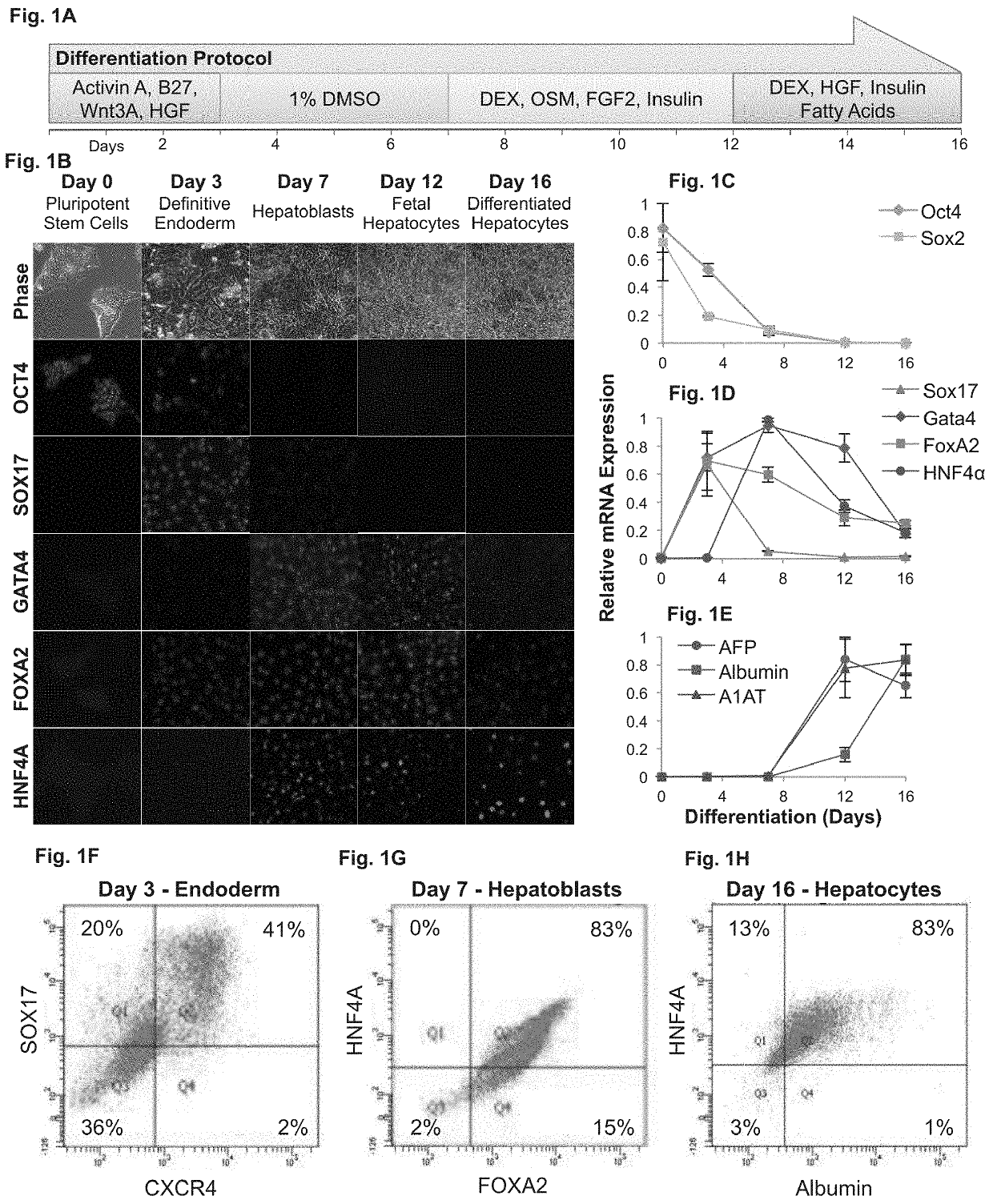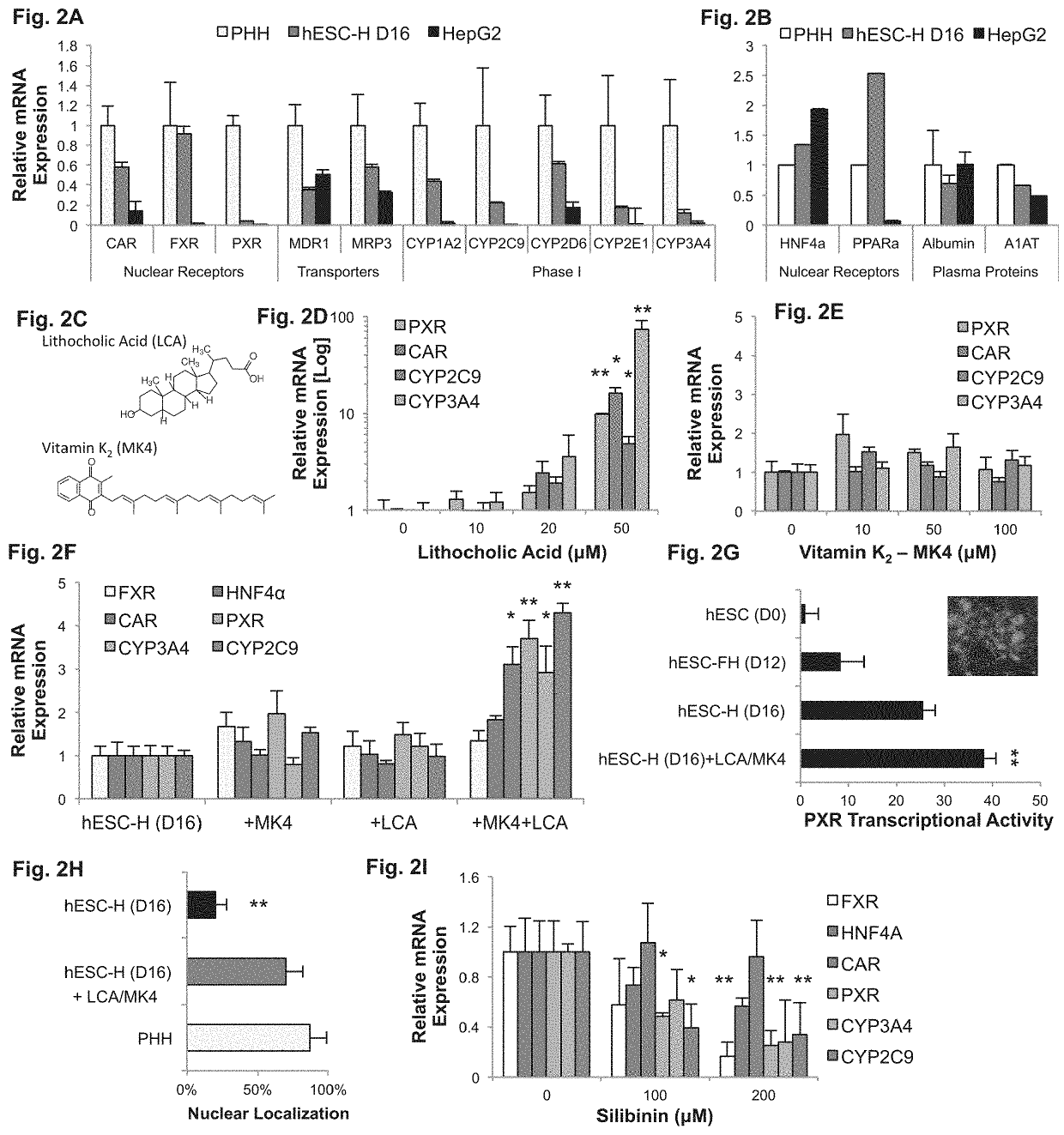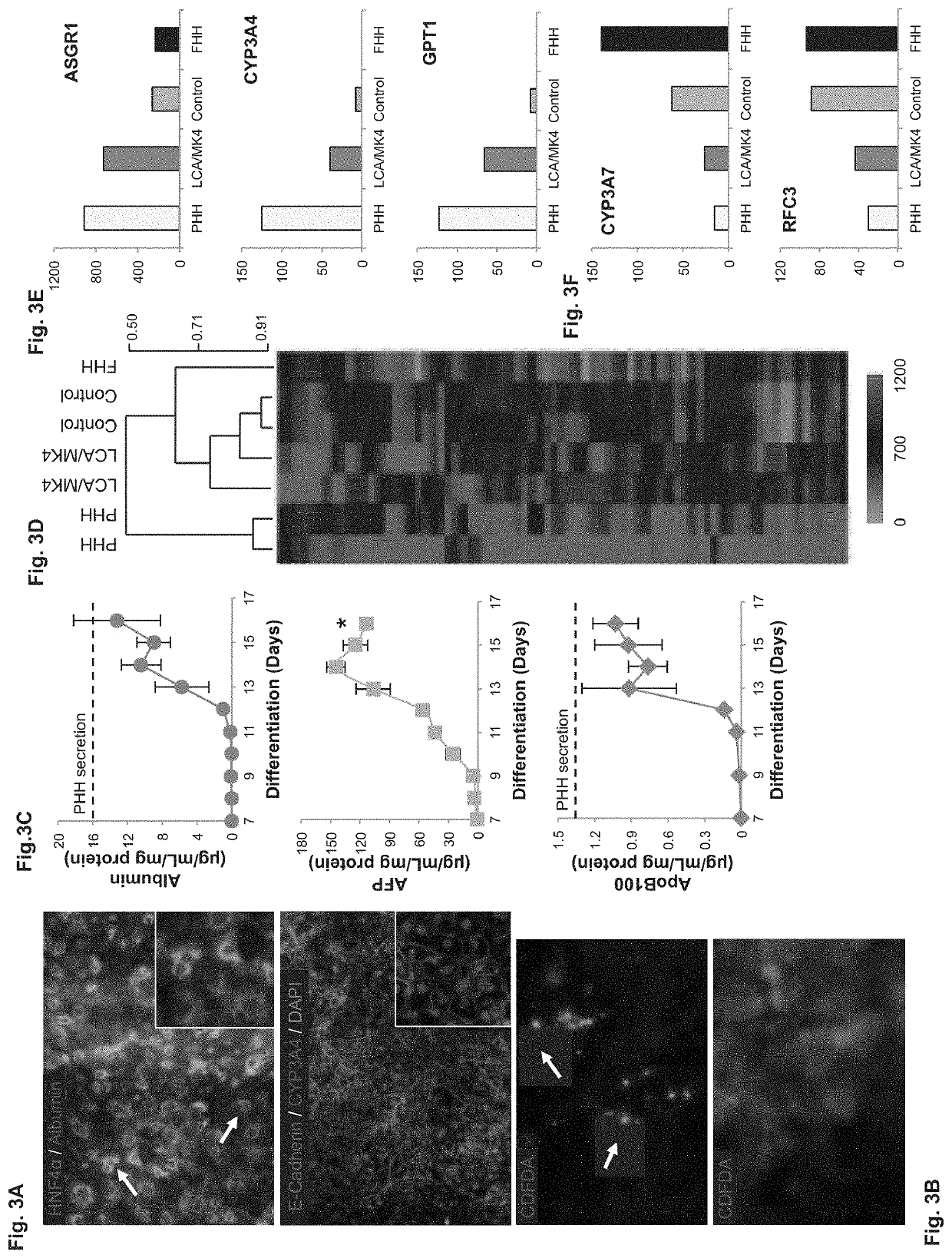Methods of inducing metabolic maturation of human pluripotent stem cells— derived hepatocytes
a technology of pluripotent stem cells and metabolic maturation, which is applied in the field of inducing metabolic maturation of human pluripotent stem cells — derived hepatocytes, can solve the problems of low prenatal vitamin k levels, lack of inducibility and function of most mature cyp450 enzymes, and still display fetal hepatocyte-like cells. , to achieve the effect of increasing metabolic maturation
- Summary
- Abstract
- Description
- Claims
- Application Information
AI Technical Summary
Benefits of technology
Problems solved by technology
Method used
Image
Examples
example 1
Derivation of Hepatocytes from Pluripotent Stem Cells
[0377]Experimental Results
[0378]Rapid Derivation of Human Embryonic Stem Cell (hESC) Derived Hepatocytes—
[0379]The present inventors developed a four-step hepatic differentiation protocol that included postpartum development (FIG. 1A). SRY (sex determining region Y)-box 17 (SOX17)-positive definitive endoderm emerged on the first 3 days of culture (FIGS. 1B-E), with pluripotent markers octamer-binding transcription factor 4 (OCT4) and SOX2 disappearing by day 7 on both gene and protein levels. Transient expression of GATA-binding protein 4 (GATA4) and forkhead box protein A2 (FOXA2) marked the emergence of hepatoblasts on gene and protein levels (FIGS. 1B-E). Fluorescence-activated cell sorting analysis revealed a relatively homogenous population, with 83% of cells positive for both HNF-4α and FOXA2 (FIG. 1G). Stimulation with OSM and basic fibroblast growth factor (FGF2) directed hepatoblasts to the parenchymal fate. The fetal-li...
example 2
[0382]LCA and MK4 Drive PXR-Dependent Hepatic Maturation
[0383]Experimental Results
[0384]LCA and MK4 Drive PXR-Dependent Hepatic Maturation—
[0385]LCA and MK4 are secondary metabolites previously shown to activate PXR [Staudinger J L, et al. Proc. Natl. Acad. Sci. U.S.A. 2001; 98:3369-3374; Tabb M M, et al. J Biol Chem 2003; 278:43919-43927; Ichikawa T, et al. J Biol Chem 2006; 281:16927-16934]. When added to the last stage of differentiation, LCA caused a dose-dependent induction of PXR, CAR, CYP2C9, and CYP3A4 expression (P<0.05; n=3; FIG. 2D). At 50 μM, LCA induced PXR, CAR, CYP2C9, and CYP3A4 by 10-, 16-, 5-, and 73-fold, respectively. At this concentration, CYP3A4 expression was 9-fold higher than primary hepatocytes and LCA showed mild toxicity. Therefore, subsequent differentiation was carried out at 10 μM of LCA. In contrast, addition of MK4 to the last stage of differentiation showed no significant effect (FIG. 2E). However, addition of 10 μM of both LCA and MK4 had a synergi...
example 3
[0388]Protein Expression and Functional Polarization
[0389]Experimental Results
[0390]Protein Expression and Functional Polarization—
[0391]Epithelial polarization is a critical function of hepatocytes, which secrete bile acids and modified drug metabolites by apical bile canaliculi [Kidambi S, et al. Proc Natl Acad Sci USA 2009; 106:15714-15719; Khetani S R et al. Nat Biotechnol 2008; 26:120-126]. By day 16 of differentiation, in the presence of LCA and MK4, cells acquired homogenous cuboidal morphology and displayed granular perinuclear staining for albumin and CYP3A4, as well as a strong nuclear staining for HNF-4α (FIG. 3A). A small fraction of cells became binucleated (arrows). To evaluate bile canaliculi function, cells were treated with CDFDA, which was metabolized to fluorescent CDF and secreted to bile canaliculi by active multidrug resistance-associated protein 2 (MRP2). Approximately 85% of cells showed functional bile canaliculi (arrows), with isolated clusters showing cyto...
PUM
| Property | Measurement | Unit |
|---|---|---|
| concentrations | aaaaa | aaaaa |
| concentration | aaaaa | aaaaa |
| concentration | aaaaa | aaaaa |
Abstract
Description
Claims
Application Information
 Login to View More
Login to View More - R&D
- Intellectual Property
- Life Sciences
- Materials
- Tech Scout
- Unparalleled Data Quality
- Higher Quality Content
- 60% Fewer Hallucinations
Browse by: Latest US Patents, China's latest patents, Technical Efficacy Thesaurus, Application Domain, Technology Topic, Popular Technical Reports.
© 2025 PatSnap. All rights reserved.Legal|Privacy policy|Modern Slavery Act Transparency Statement|Sitemap|About US| Contact US: help@patsnap.com



